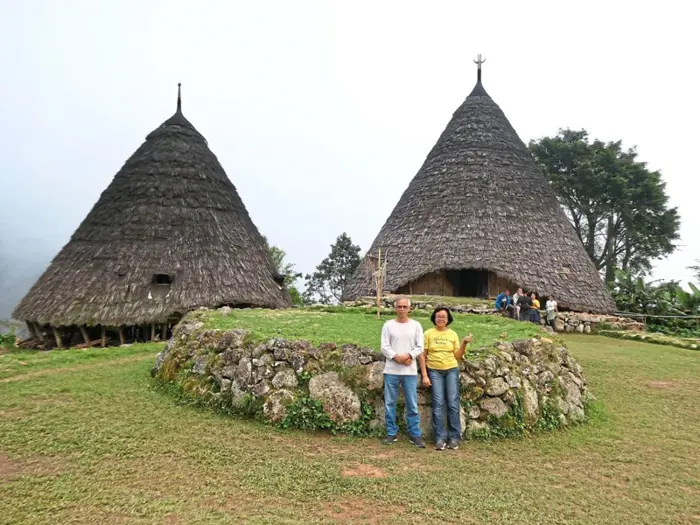ANN/THE STAR – Our adventure began in Labuan Bajo on our recent trip to Indonesia.
My wife and I had the pleasure of visiting the enchanting Wae Rebo village on the island of Flores. This hidden gem was honoured with the “Award of Excellence” by UNESCO in 2012, during the Asia Pacific Heritage Awards in Thailand.
We boarded a van for a four-hour journey to Denge. The drive took us through diverse terrains, from narrow village lanes and winding mountain roads to bumpy gravel paths with colossal potholes. At times, our driver had to pause and fill these craters with pebbles just so we could continue.

In Denge, we switched to motorbikes, riding pillion without helmets. The 15-minute ride was a thrilling experience, as our bikers navigated steep inclines and rough patches at breakneck speeds. Despite the hair-raising journey, we were grateful for the skill and expertise of our drivers and bikers who ensured our safety through the challenging roads.
The bikes dropped us at the trailhead, and we commenced our hike to the village. The trail was well-marked and frequently used, although some sections were quite steep.
After slightly more than two hours of hiking, we finally reached Wae Rebo village. Before entering the place, we had to announce our arrival to the villagers by hitting a hollow tree trunk. We were told not to do anything like wander around the village by ourselves before being welcomed by the elder or chief.
We were asked to gather inside the main house where the village elder properly welcomed us and performed a simple blessing ceremony.
Wae Rebo is famous, among others, for the conical-shaped houses called Mbaru Niang. These are covered with lontar thatch, which is from a type of palm tree. Each house has five levels with specific functions like living quarters, food storage and seed/grain storage. The topmost level is used to place offerings for the villagers’ ancestors.
After such a long journey getting here, we were rejuvenated by the cool, fresh air and peaceful surroundings.
We wandered around the village taking photos, and observing the villagers going about their daily activities.

At dinner time, we went back to our guest house which was occupied by about 30 visitors. We were served rice with chicken, vegetables and eggs prepared by the village women and sat on mats laid out on the floor.
Electricity was available for only four hours each night and we slept on mattresses arranged on the floor with a pillow and blanket provided. The temperature was about 10°C.
The next morning, I woke up early to see the changing colours of the sky as the sun rose from behind the mountains. At breakfast, we were given rice and eggs, which definitely filled us up for our hike back to Denge.
We thoroughly enjoyed the trip despite the long, arduous journey. Wae Rebo is beautiful, clean and its people were so welcoming. Spending our day without electricity and phone signals, just enjoying the simplicities of life was great for us.

Tourist arrivals to this part of the world have steadily increased over the years, supplementing the income of the villagers who mostly plant coffee and some other crops like vanilla and cloves. My hope is for Wae Rebo to remain as authentic as it can be and for tourists to respect the people’s culture and traditions so that their heritage can be preserved.
As the saying goes, “Take nothing but photographs, leave nothing but footprints.” – Tan Seng Chye





